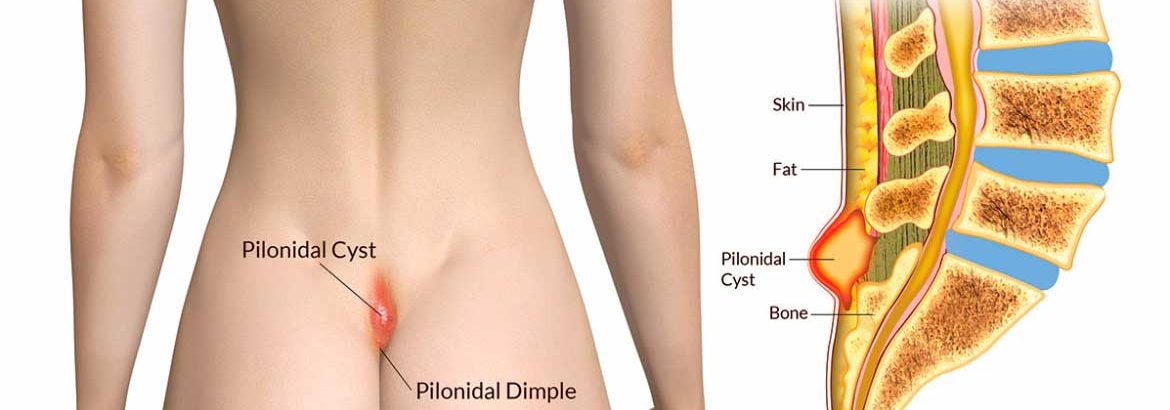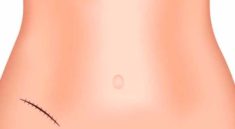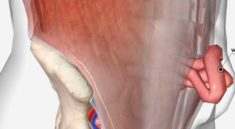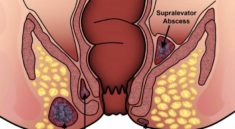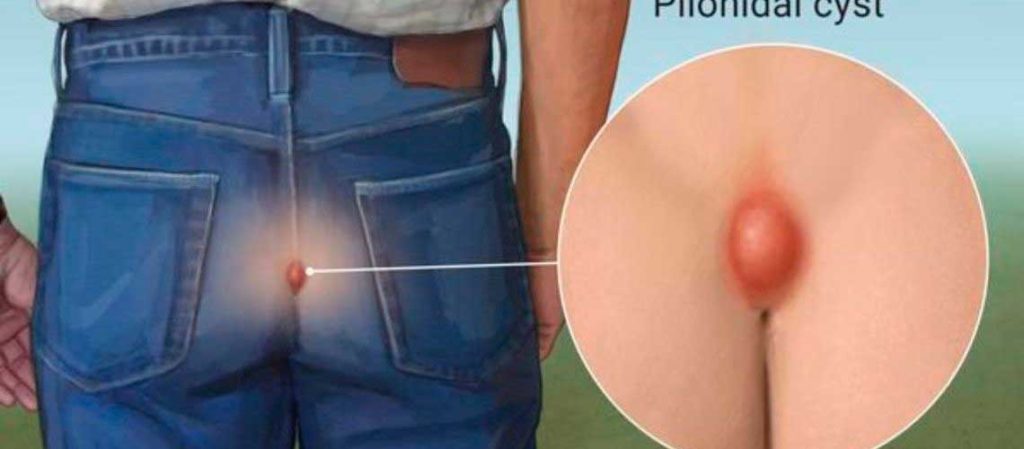
INFORMATION
Surgery for pilonidal cyst
A pilonidal cyst is a pocket that forms around a hair follicle in the crease between the buttocks. The area may look like a small pit or pore in the skin that contains a dark spot or hair. Sometimes the cyst can become infected and this is called a pilonidal abscess.
Description
An infected pilonidal cyst or abscess requires surgical drainage. It will not heal with antibiotic medicines. If you continue to have infections, the pilonidal cyst can be removed.
There are several types of surgery.
Incision and drainage: This is the most common treatment for an infected cyst. It is a simple procedure done in the doctor’s office.
- Local anesthesia is used to numb the skin.
- A cut is made in the cyst to drain fluid and pus. The hole is packed with gauze and left open.
- Afterward, it can take up to 4 weeks for the cyst to heal. The gauze has to be changed often during this time.
Pilonidal cystectomy: If you keep having problems with a pilonidal cyst, it can be removed surgically. This procedure is done as an outpatient procedure, so you will not need to spend the night in the hospital.
- You may be given medicine (general anesthesia) that keeps you asleep and pain-free. Or, you may be given medicine (regional anesthesia) that numbs you from the waist down. In rare cases, you may only be given local numbing medicine.
- A cut is made to remove the skin with the pores and the underlying tissue with the hair follicles.
- Depending on how much tissue is removed, the area may or may not be packed with gauze. Sometimes a tube is placed to drain fluid that collects after surgery. The tube is removed at a later time when the fluid stops draining.
It may be hard to remove the entire cyst, so there is a chance that it will come back.
Why the Procedure is Performed
Surgery is needed to drain and remove a pilonidal cyst that does not heal.
- Your doctor may recommend this procedure if you have pilonidal disease that is causing pain or infection.
- A pilonidal cyst that is not causing symptoms does not need treatment.
Non-surgical treatment may be used if the area is not infected:
- Shaving or laser removal of hair around the cyst
- Injection of surgical glue into the cyst
Risks
Pilonidal cyst resection is generally safe. Ask your doctor about these complications:
- Bleeding
- Infection
- Taking a long time for the area to heal
- Having the pilonidal cyst come back
Before the Procedure
Meet with your doctor to make sure medical problems, such as diabetes, high blood pressure, and heart or lung problems are in good control.
Tell your health care provider:
- What medicines, vitamins, and other supplements you are taking, even ones you bought without a prescription.
- If you are or could be pregnant.
- If you have been drinking a lot of alcohol, more than 1 or 2 drinks a day.
- If you are a smoker, stop smoking several weeks before the surgery. Your provider can help.
- You may be asked to temporarily stop taking blood thinners, such as aspirin, ibuprofen (Advil, Motrin), naproxen (Aleve, Naprosyn), vitamin E, clopidogrel (Plavix), warfarin (Coumadin), and any other drugs like these.
- Ask your doctor which medicines you should take on the day of your surgery.
On the day of the surgery:
- Follow instructions about whether you need to stop eating or drinking before surgery.
- Take any drugs your doctor told you to take with a small sip of water.
- Follow instructions on when to arrive at the hospital. Be sure to arrive on time.
After the Procedure
After the procedure:
- You can go home after the procedure
- The wound will be covered with a bandage
- You will get pain medicines
- It is very important to keep the area around the wound clean
- Your provider will show you how to care for your wound
- After it heals, shaving the hair in the wound area may help prevent pilonidal disease from coming back
Outlook (Prognosis)
Pilonidal cysts come back in about half of the people who have surgery the first time. Even after a second surgery, it may come back.
What to do after pilonidal cyst surgery?
How can you care for yourself at home?
- Rest when you feel tired. …
- Try to walk each day. …
- Shower as usual. …
- Ask your doctor when you can drive again.
- Avoid sitting for a long time or sitting on hard surfaces until your incision has healed.
- Most people are able to return to work within 2 to 4 weeks after surgery.
How long does a pilonidal cyst take to heal after it is drained?
Treatment. Your pilonidal cyst was drained with a small incision using local anesthesia. After the incision and drainage, gauze packing may be inserted into the opening. If so, it should be removed in 1 to 2 days.
How long does it take to recover from a pilonidal cyst surgery?
about 4 weeks
If the cut (incision) was closed with stitches, it will probably take about 4 weeks to completely heal. If your incision is left open, it may take from a few weeks to several months to heal. After the incision has healed, you will have a scar where the cyst was removed. This will fade and become softer with time.
Will a pilonidal cyst go away by itself?
This problem will not go away by itself and will become worse over time. Furthermore, pilonidal cysts endanger your body and health and might lead to deadly blood infection. … As long as the pilonidal cyst remains intact, expect recurrent infection, pain, drainage of copious pus, and tracking
What is the fastest way to get rid of a pilonidal cyst?
The only way to get rid of a pilonidal cyst is through a minor surgical procedure. But there are a few things you can do at home to ease pain and discomfort in the meantime. Try applying a hot, wet compress to the cyst a few times a day. The heat will help pull out the pus, allowing the cyst to drain
Contact Info
3811 Mt. Vernon Ave. Bakersfield, CA 93306
Fax
Working Hours
- Monday8.30 AM To 5.30 PM
- Tuesday8.30 AM To 5.30 PM
- Wednesday8.30 AM To 5.30 PM
- Thursday8.30 AM To 5.30 PM
- Friday9.00 AM To 5.30 PM
- SaturdayClosed
- SundayClosed


